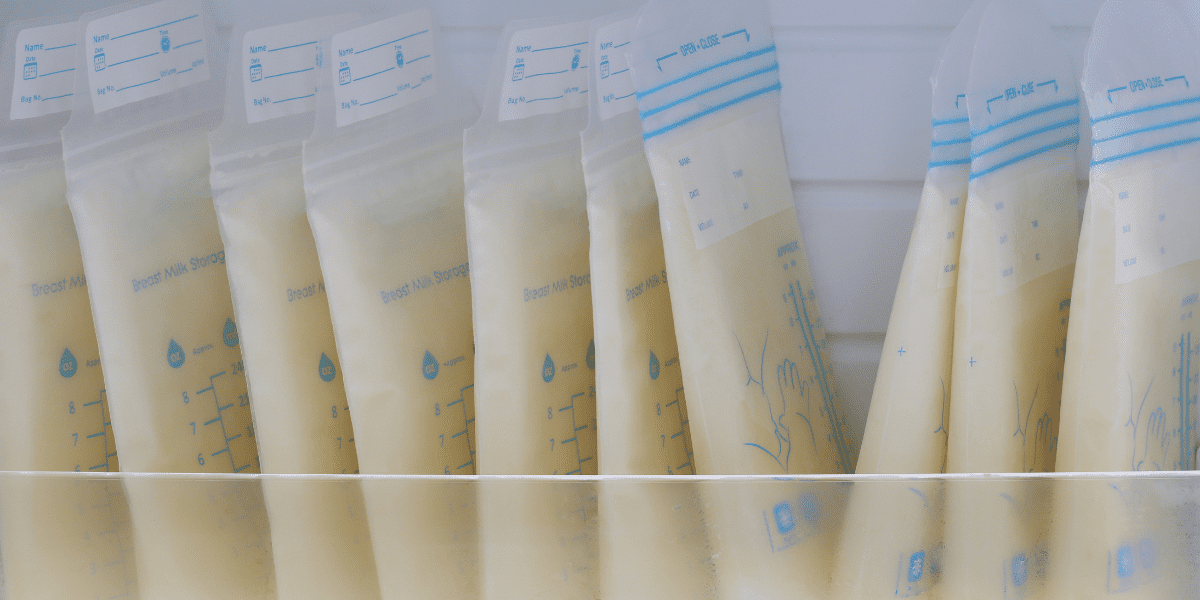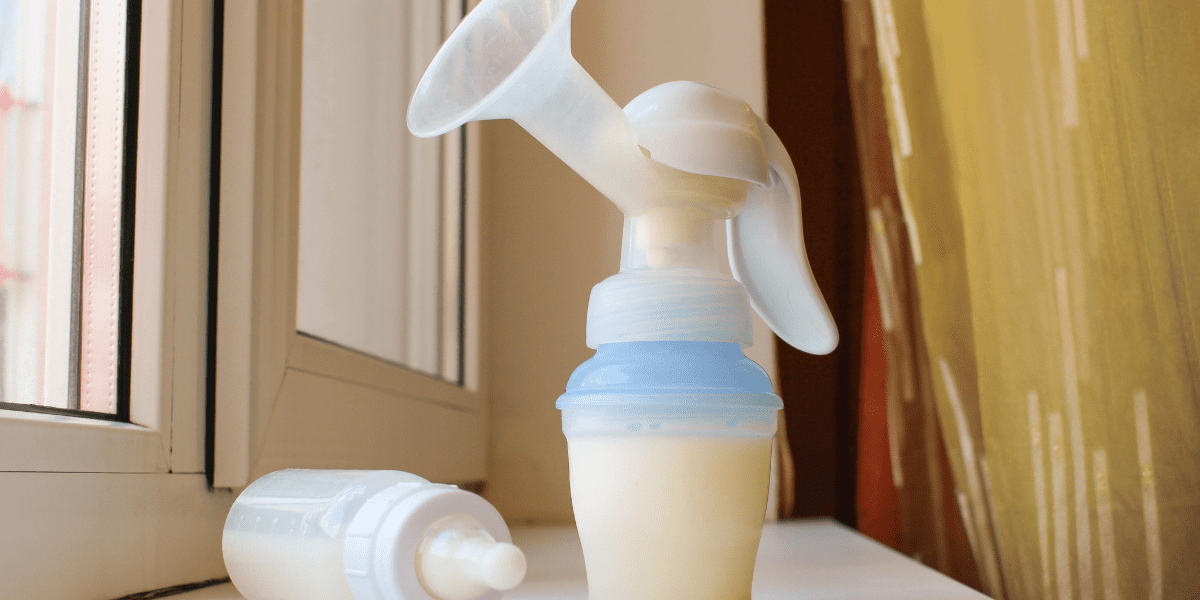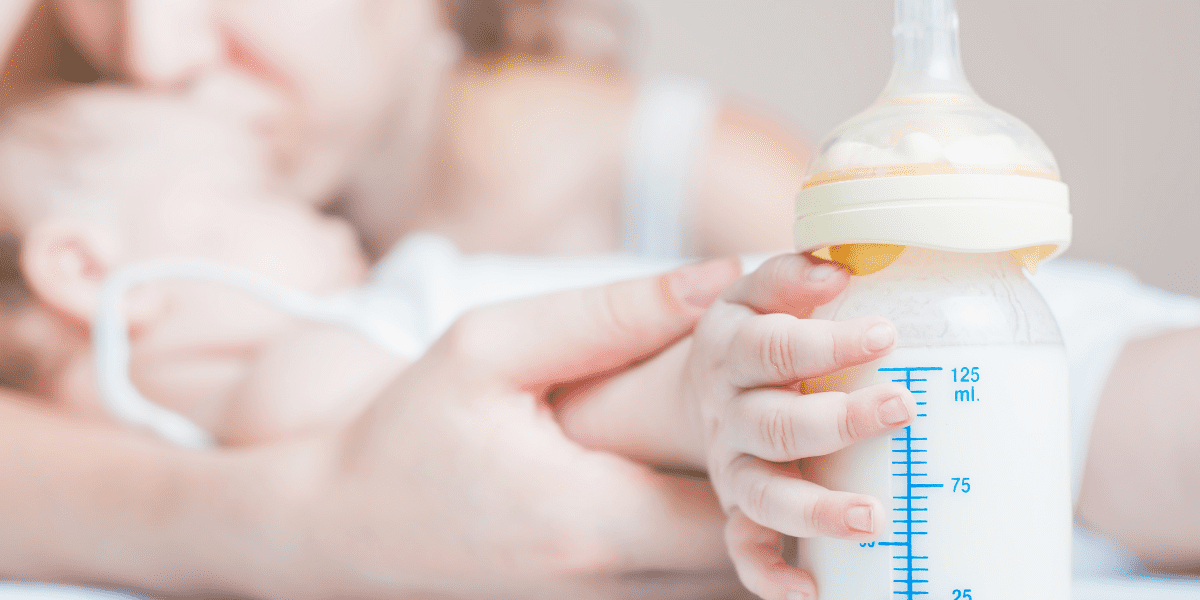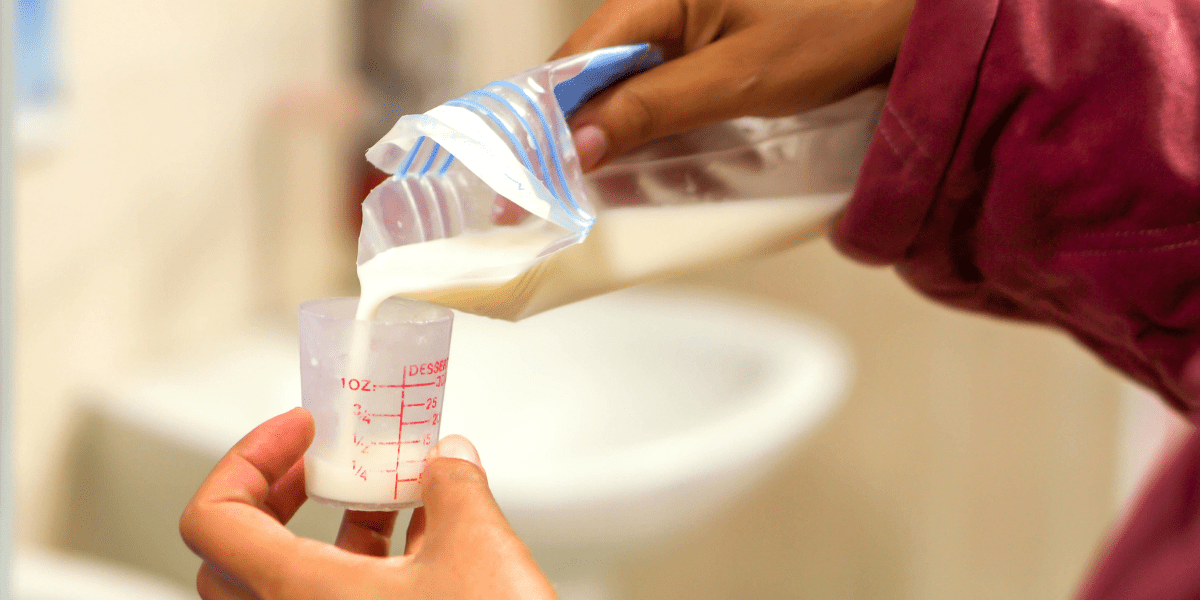Breast milk contains beneficial nutrients that aid your baby’s development. With a regular feeding schedule, you can ensure that your baby gets the necessary vitamins, minerals, and fats that it needs to meet key milestones.
Babies thrive from breastmilk as it has the right amount of fats, however, you must ensure that you feed throughout the day to get optimum nutrition.
As the levels of fat in breastmilk vary throughout the day, some moms worry about whether their milk is fatty enough or if it is too fatty.
As an Amazon Associate I earn from qualifying purchases. The links below may be affiliate links. Please read my disclosure policy for more information.
It is important to know that the amount of fat in breastmilk will vary throughout the day and every woman will have different levels of fat in her milk.
On the whole, the varying levels of fat in milk will not impact your child’s growth and development.

The Importance of Breast Milk
Breastfeeding is a great way to get your baby to the best start in life as milk contains numerous vitamins, minerals, complex carbohydrates, proteins, and healthy fats.
In the first few days of breastfeeding, the liquid that comes out of your breast is a yellow fluid called colostrum.
Colostrum contains essential antibodies that will aid your baby’s immune development and gastrointestinal development.

Fat Content of Breast Milk
On average, every ounce of breast milk contains 22 calories. The number of calories will vary throughout the day and from day to day as the fat content of the milk does not same the same.
The fat content of milk can vary wildly throughout the day, depending on several factors.
The fat content in human milk changes between each feed and throughout the day. On average, however, the fat content of breastmilk is 1.2 grams per ounce.
Fat content in mom’s milk will vary depending on the following:
- The fullness of the breast—when the breast is full the fat content is lower and as the breast begins to empty the fat content of the milk increases.
This process is due to the fat globules being forced out like the breast releases milk.
The milk that your baby gets when you first start feeding is known as the foremilk which is rich in nutrients and protein but lower in fat and then the hindmilk is released which has the highest fat content. - Length of time between feeds—As fat adheres to the ducts and the milk itself stays within the breast, feeding at longer intervals means that the fat content is lower in the first stage of nursing.
The longer the period between feeds the less fat content and this also means that one feed may have more fat than the other. It is important to know that the length of the actual feed is not important as some babies can drink both the foremilk and the hindmilk in a matter of minutes and others may feed longer but they are still only taking in the two types of milk. - Time of the day—as fat content of your milk will be different across time this means that at the time of day when your breasts tend to be fuller there will be less fat and vice versa.
If you are worried about how much fatty milk your baby is getting you can monitor when your breasts are fuller and thus vary the types of feed and times you are feeding your baby. - Feeding position—A good feeding position will help your baby feed more effectively and for longer periods.
While the longer the feed does not necessarily mean a higher fat content but if you fully empty your breasts then you are sure that your baby has latched on properly and has managed to drink the fatty hindmilk. - Breast compression—breast compression can boost the levels of fat in breastmilk as it stimulates the breast milk to let down and help your baby latch on to feed well.
Practicing breast compression is not something that needs to be done if your baby is feeding well but is good if you are worried about fat content or if your baby is not gaining weight, is suffering from colic or you have blocked milk ducts.
When it comes to diet, while a mom’s diet does not change the fat levels in breast milk it can affect the types of fat depending on what she eats.
Studies have shown that some women will have lower levels of monounsaturated fats if they eat a vegetarian diet while mothers who eat animal products have a higher amount.
Overall, though, diet does not have an effect on fat content in breast milk

Does the amount of fat in mom’s milk affect the baby’s growth?
While fat in milk is essential for good brain and nutritional development it doe not directly affect your baby’s growth. The total intake of breastmilk is what dictates your baby’s growth.
If at any stage you are worried about how much weight your baby is gaining or if they are not gaining weight then you should talk to a medical professional.
You can help with this by:
- Feeding with one breast—generally, you should allow your baby to feed fully on each breast so that they get to the point of drinking the hindmilk. If you find you switch over to the other breast halfway through a feed your baby may get full before they can reach the hindmilk on the second breast.
- Pump out the foremilk from your breasts if feeding with two breasts—If you do need to feed on two breasts you can try pumping or hand expressing some of the foremilk to ensure your baby is getting enough hindmilk.
- Breast massage—compressing and massing breasts can help the flow of milk and will unblock and ducts that could be affecting the amount of hindmilk your baby is drinking. Massaging will also help the fattier parts of the milk to move towards the nipple.
- Eating a balanced and healthy diet —will not affect the fat content of your baby’s milk but it will provide good nutrition and hydration to you as a mom which will, in turn, help you produce good levels of milk production so that your baby can get the nutrients they need.
- Increase feeding frequency—as you nurse more often the amount of hindmilk that your baby consumes will increase.
- Consult a medical expert—If you are unsure about any aspects of breastfeeding, including how much fatty milk your baby is taking in then a lactation consultant can help allay your fears by answering your questions. They can offer up advice and support on best practices when feeding your baby at intervals.

Foremilk and Hindmilk imbalance
You may have read about foremilk and hindmilk imbalance also known as lactose overload. This refers to your baby taking in more foremilk than hindmilk, which can mean that if your baby drinks quickly and becomes full then they may not have consumed a high-fat content.
When there is a high-fat content in the milk your baby the fat slows from the process of the milk reaching the gut and therefore your baby may not get as full as quickly.
If your baby has lots of less fatty milk in their gut they may have problems with digestion. You will see this in your baby’s poo as it will be green, frothy, and smelly.
This may also cause pain for your baby but is not generally something out should worry about.
If your baby has the odd green poo then this is normal and you should only escalate to a doctor if diapers are regularly green and your baby is often showing signs of discomfort.
If you believe your baby to have foremilk and hindmilk imbalance you can try the following:
- Work on achieving a more secure latch
- Encourage your baby to feed longer on each breast
- Help your baby enjoy a good flow of milk by changing the feeding position, laying on your side can help with a more steady flow
- Increasing the frequency of feeding so that your baby does not take in too much foremilk at once

You should now understand the significance of fat in your breastmilk and how it affects your baby. By feeding your baby at regular intervals and not leaving too long a time period in-between feeds you should have a healthy production of fat in your breast milk for your baby to enjoy.
When your breasts are full there is likely to be a lower fat content and when they are less full and towards the end of a feed they will have a higher content, which is why you should allow your baby to feed fully on each breast and do not be tempted to unlatch when your baby is not ready.
